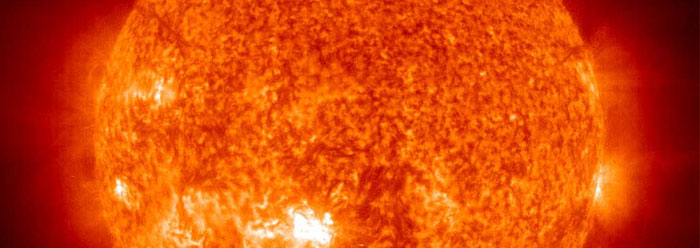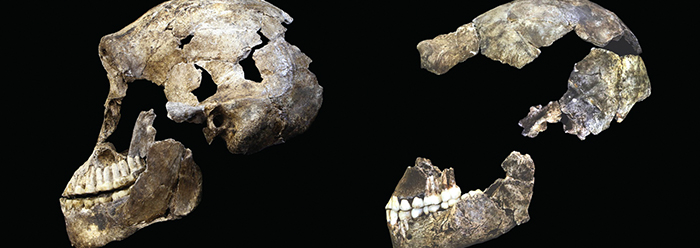Scientists previously uncovered fossil algae in Archean rocks—evidence of life in a period that evolutionists date from 3.0 to 3.5 billion years ago.1 At that supposed time, the sun would have been 70 percent less luminous compared to today, making Earth's surface icy and uninhabitable.
But if those rocks are truly 3.0 to 3.5 billion years old, the meager solar energy delivered by the younger sun at that time would have prevented algae or any other life form from growing.
Attempting to come up with something to counter the icy-earth scenario, authors publishing in Science postulated that Earth was somehow warmed by high levels of greenhouse gases to compensate for the great lack of solar radiation.1 To investigate this possibility, the team sampled quartz veins from Archean rocks of the Dresser and Apex formations in Western Australia that were thought to be nearly 3.5 billion years old.
These quartz veins were formed by hydrothermal activity and contain trapped gases and fluids locked in crystals. The study authors assumed the trapped gases represent the ancient atmospheric gas levels.
However, the research results were discouraging, at best.
As researcher Dr. Ray Burgess from the University of Manchester said, "The amount of nitrogen in the [supposed ancient] atmosphere was too low to enhance the greenhouse effect of carbon dioxide sufficiently to warm the planet."2 In fact, the study even showed that the so-called ancient atmosphere contained slightly less than today's levels of atmospheric nitrogen, making the "faint young sun paradox" even more perplexing to those committed to a billion-year history.
While the study authors point to a slight chance that the high carbon dioxide (CO2) pressures they found in the gaseous rocks might have helped sufficiently warm the earth, no conclusive research has yet proven this point.2 So, where did the 3.5 billion-year-old algae come from if it grew in a cold era without even the existence of atmosphere-warming gases?3
At the end of the day, when all the high-tech laboratory equipment has completed its tasks, the "faint young sun paradox" remains a "mystery" in the evolutionary time scale. But if these scientists considered that Earth is only thousands of years old—as clearly stated in the Bible—then there would be no need to reconcile old life with an old sun.
Creation scientists do not wrestle with this paradox, because the sun, planets, and Earth are all young and were created whole.4 Solar radiation on Day Four of the creation week, near the beginning of time itself, was not much different from today and perfectly suited for life—an explanation that frees scientists from this unnecessary conundrum.
References
- Marty, B. et al. 2013. Nitrogen Isotopic Composition and Density of the Archean Atmosphere. Science. 342 (6154): 101-104.
- Climate puzzle over origins of life on Earth. The University of Manchester press release, October 4, 2013.
- Thomas, B. Can Solar 'Belch' Theory Solve Sun Paradox? Creation Science Update. Posted on icr.org March 21, 2012, accessed October 22, 2013.
- Lisle, J. The Solar System: The Sun. Acts & Facts. 42 (7): 10-12.
* Dr. Clarey is Research Associate at the Institute for Creation Research.
Article posted on October 23, 2013.























